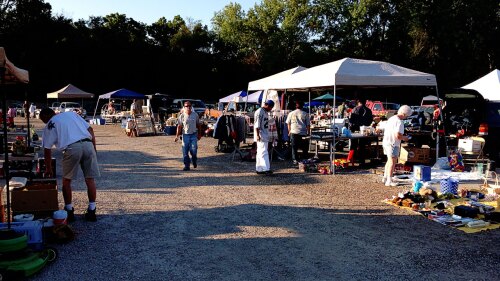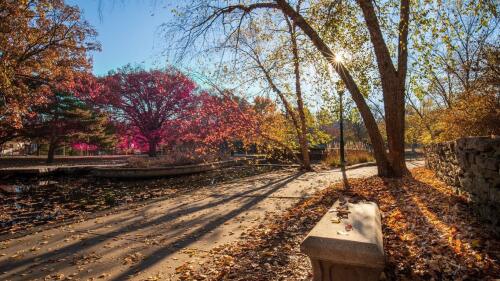If you’ve ever been down to the Plaza, you may have noticed signs pointing you east toward the Muriel Kauffman Memorial Garden. This lush oasis — blooming with fountains, art installations, and wildlife — is adored by visitors and locals alike. Next to it is Kauffman Legacy Park, where 10 acres of trails + waterways meet conservation efforts at the Gorman Center.
These urban gems are situated on prime KC real estate, which begs the question: How did they come to be? What if we told you the area used to be a neighborhood full of houses + businesses?
The Trolley Barn Neighborhood
The year is 1906. Amid a booming population and high transit demand, a new streetcar storage facility opened at 48th + Harrison streets (literally a garden today). Streetcar employees purchased homes around their work, and cheap land spurred the development of 150 properties by the mid-1920s.
The neighborhood’s decline
The advent of motorized buses + improved highways made the trolley system obsolete. In 1957, the streetcar facility shut down. Over the years, the facility was used for a number of purposes — the orchestra renovated it in the 60s and called it the Philharmonic Trolley Barn — but it was eventually vacated.
In 1977, Brush Creek flooded, sending five feet of water across Ward Parkway. Twenty-five people lost their lives, and extensive damage pervaded the entire Plaza area. The barn was razed a year later, and property battles — landowners vs. neighborhood associations — resulted in flight + blight.
An urban nature center is born
The former neighborhood was bulldozed and sat vacant for seven years (1990-1997). Then, the Ewing Marion Kauffman Foundation bought the land and broke ground. Its memorial garden + park opened in 2000, and the conservation center was finished a year later.
Read more on KCQ by the Kansas City Public Library + Kansas City Star.










